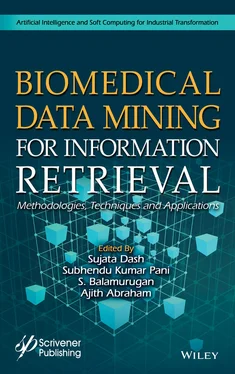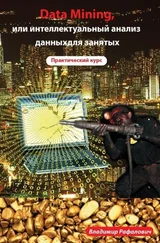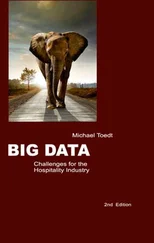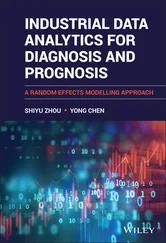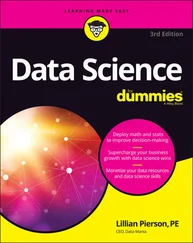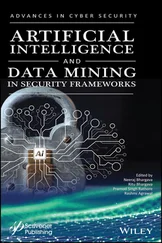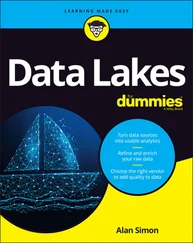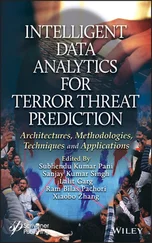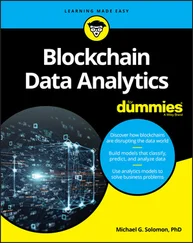In Chapter 8, “Statistical Image Analysis of Drying Bovine Serum Albumin Droplets in Phosphate Buffered Saline,” Anusuya Pal, Amalesh Gope and Germano S. Iannacchione have an important discussion about how statistical image data are monitored and analyzed. It is revealed that the image processing techniques can be used to understand and quantify the textural features that emerge during the drying process. The image processing methodology adopted in this chapter is certainly useful in quantifying the textural changes of the patterns at different saline concentrations those dictate the ubiquitous stages of the drying process.
In Chapter 9, “Introduction to Deep Learning in Health Informatics,” Monika Jyotiyana and Nishtha Kesswani discuss deep learning applications in biomedical data. Because of the vital role played by biomedical data, this is an emergent field in the health sector. These days, health industries focus on the correct and on-time treatment provided to the subject for their betterment while avoiding any negative aspects. The huge amount of data brings enormous opportunities as well as challenges. Deep learning and AI techniques provide a sustainable environment and enhancement over machine learning and other state-of-the-art theories.
In Chapter 10, “Data Mining Techniques and Algorithms in Psychiatric Health: A Systematic Review,” Shikha Gupta, Nitish Mehndiratta, Swarnim Sinha, Sangana Chaturvedi and Mehak Singla review the latest literature belonging to the intercessions for data mining in mental health covering many techniques and algorithms linked with data mining in the most prevalent diseases such as Alzheimer’s, dementia, depression, schizophrenia and bipolar disorder. Some of the academic databases used for this literature review are Google Scholar, IEEE Xplore and Research Gate, which include a handful of e-journals for study and research-based materials.
In Chapter 11, “Deep Learning Applications in Medical Image Analysis,” Ananya Singha, Rini Smita Thakur and Tushar Patel present detailed information about deep learning and its recent advancements in aiding medical image analysis. Also discussed are the variations that have evolved across different techniques of deep learning according to challenges in specific fields; and emphasizes one such extensively used tool, convolution neural network (CNN), in medical image analysis.
In Chapter 12, “Role of Medical Image Analysis in Oncology,” Gaganpreet Kaur, Hardik Garg, Kumari Heena, Lakhvir Singh, Navroz Kaur, Shubham Kumar and Shadab Alam give deep insight into the cancer studies used traditionally and the use of modern practices in medical image analysis used for them. Cancer is a disease caused due to uncontrolled division of cells other than normal body cells in any part of the body. It is among one of the most dreadful diseases affecting the whole world; moreover, the number of people suffering from this fatal disease is increasing day by day.
In Chapter 13, “A Comparative Analysis of Classifiers Using Particle Swarm Optimization-Based Feature Selection,” Chandra Sekhar Biswal, Subhendu Kumar Pani and Sujata Dash analyze the performance of classifiers using particle swarm optimization-based feature selection. Medical science researchers can collect several patients’ data and build an effective model by feature selection methods for better prediction of disease cure rate. In other words, the data acts just as an input into some kind of competitive decision-making mechanism that might place the company ahead of its rivals.
The chapters of this book were written by eminent professors, researchers and those involved in the industry from different countries. The chapters were initially peer reviewed by the editorial board members, reviewers, and those in the industry, who themselves span many countries. The chapters are arranged to all have the basic introductory topics and advancements as well as future research directions, which enable budding researchers and engineers to pursue their work in this area.
Biomedical data mining for information retrieval is so diversified that it cannot be covered in a single book. However, with the encouraging research contributed by the researchers in this book, we (contributors), editorial board members, and reviewers tried to sum up the latest research domains, developments in the data analytics field, and applicable areas. First and foremost, we express our heartfelt appreciation to all the authors. We thank them all for considering and trusting this edited book as the platform for publishing their valuable work. We also thank all the authors for their kind co-operation extended during the various stages of processing of the manuscript. This edited book will serve as a motivating factor for those researchers who have spent years working as crime analysts, data analysts, statisticians, and budding researchers.
Dr. Sujata Dash Department of Computer Science and ApplicationNorth Orissa University, Baripada, Mayurbhanj, India
Dr. Subhendu Kumar Pani PrincipalKrupajal Computer Academy, BPUT, Odisha, India
Dr. S. Balamurugan Director of Research and Development Intelligent ResearchConsultancy Service (iRCS), Coimbatore, Tamil Nadu, India
Dr. Ajith Abraham DirectorMIR Labs, USA May 2021
1
Mortality Prediction of ICU Patients Using Machine Learning Techniques
Babita Majhi1*, Aarti Kashyap1 and Ritanjali Majhi2
1Dept. of CSIT, Guru Ghasidas Vishwavidyalaya, Central University, Bilaspur, India
2School of Management, National Institute of Technology Karnataka, Surathkal, India
Abstract
The intensive care unit (ICU) admits highly ill patients to facilitate them serious attention and treatment using ventilators and other sophisticated medical equipments. These equipments are very costly hence its optimized uses are necessary. ICUs have a number of staffs in comparison to the number of patients admitted for regular monitoring of the patients. In brief, ICUs involve large amount of budget in comparison to other sections of any hospital. Therefore to help the doctors to find out which patient is more at risk mortality prediction is an important area of research. In data mining mortality prediction is a binary classification problem i.e. die or survive. As a result it attracts the machine learning group to apply the algorithms to do the mortality prediction. In this chapter six different machine learning methods such as Functional Link Artificial Neural Network (FLANN), Support Vector Machine (SVM), Discriminate Analysis (DA), Decision Tree (DT), Naïve Bayesian Network and K-Nearest Neighbors (KNN) are used to develop model for mortality prediction collecting data from Physionet Challenge 2012 and did the performance analysis of them. There are three separate data set each with 4000 records in Physionet Challenge 2012. This chapter uses dataset A containing 4000 records of different patients. The simulation study reveals that the decision tree based model outperforms the rest five models with an accuracy of 97.95% during testing. It is followed by the FA-FLANN model in the second rank with an accuracy of 87.60%.
Keywords:Mortality prediction, ICU patients, physioNet 2012 data, machine learning techniques
Healthcare is the support or improvement of wellbeing by means of the avoidance, finding, treatment, recuperation or fix of sickness, disease, damage and other physical and mental hindrances in individuals [1]. Hospitals are dependent upon various weights, including restricted assets and human services assets which include limited funds and healthcare resources. Mortality prediction for ICU patients is basic commonly as the snappier and increasingly precise the choices taken by intensivists, the more the advantage for the two, patients and medicinal services assets. An emergency unit is for patients with the most genuine sicknesses or wounds. The vast majority of the patients need support from gear like the clinical ventilator to keep up typical body capacities and should be continually and firmly checked. For quite a long time, the number of ICUs has encountered an overall increment [2]. During the ICU remain, diverse physiological parameters are estimated and examined every day. Those parameters are utilized in scoring frameworks to measure the seriousness of the patients. ICUs are answerable for an expanding level of the human services spending plan, and consequently are a significant objective in the exertion to constrain social insurance costs [3]. Consequently, there is an expanding need, given the asset accessibility restrictions, to ensure that extra concentrated consideration assets are distributed to the individuals who are probably going to profit most from them. Basic choices incorporate hindering life-bolster medications and giving doesn’t revive orders when serious consideration is viewed as worthless. In this setting, mortality evaluation is an essential assignment, being utilized to foresee the last clinical result as well as to assess ICU viability, and assign assets.
Читать дальше
